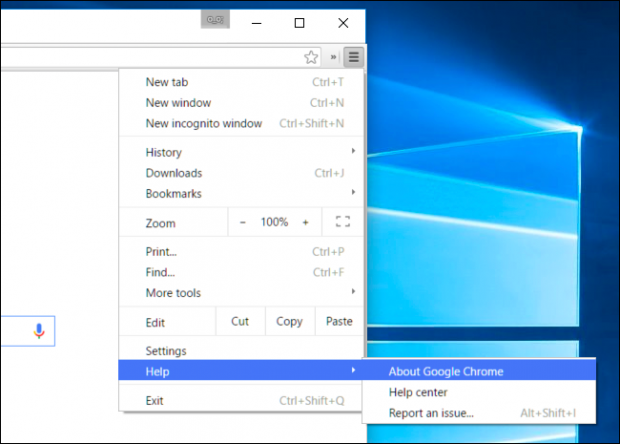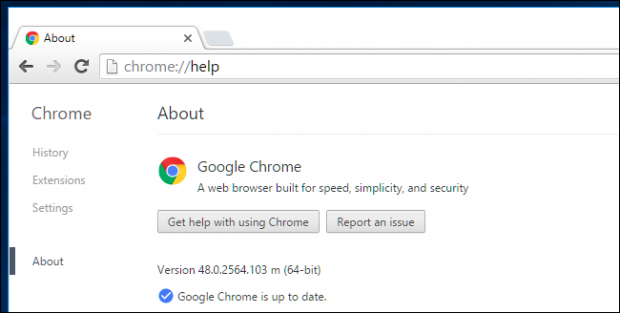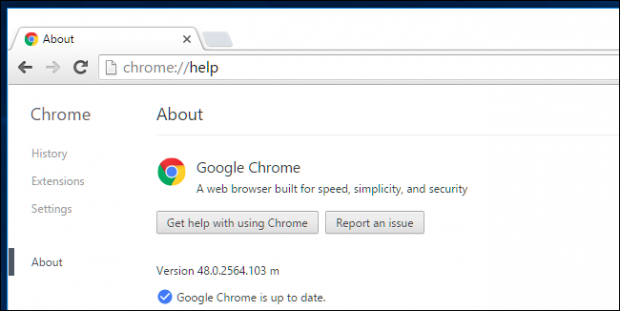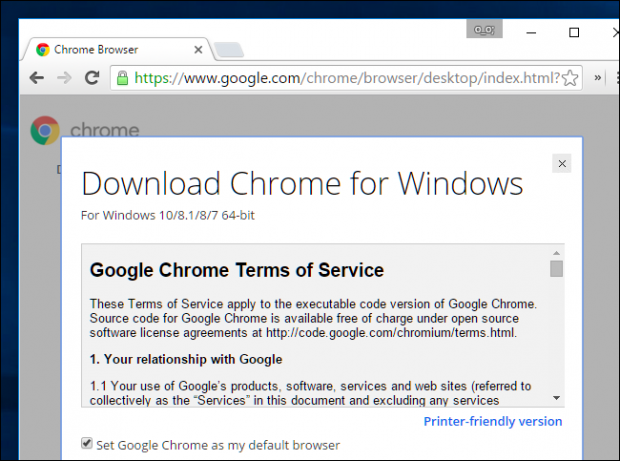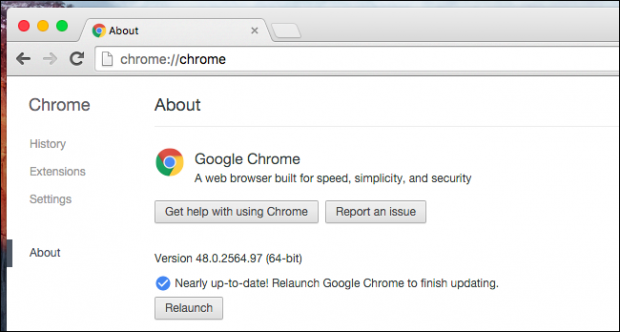You Should Upgrade to 64-bit Chrome

Using Chrome on Windows? There’s a good chance you’re still using the 32-bit version. You should upgrade to the 64-bit version. It’s more secure–not to mention faster and more stable.
The only reason not to upgrade is if you’re using a 32-bit version of Windows that can’t run 64-bit programs, but most computers built in the last eight years or so should be 64-bit compatible. Even if your computer is compatible, though, Chrome won’t update to 64-bit on its own–you have to download it yourself.
Why the 64-bit Version of Chrome Is Best
64-bit versions of Windows are more secure, and Chrome is no different. The 64-bit version of Chrome has a variety of additional security features. Google’s original blog post says they “are able to far more effectively defend against vulnerabilities that rely on controlling the memory layout of objects” on 64-bit versions of Chrome.
In addition, the 64-bit version of Chrome includes a 64-bit version of Adobe Flash. Google has worked with Adobe to improve Flash’s protections against various type of attack, and these exploit mitigations are more effective on 64-bit versions of Chrome.
There are other ways Chrome behaves more securely on 64-bit versions of Windows, too, but Google doesn’t have a slick page explaining all of them. For example, a comment in this bug report notes that the 64-bit version of Chrome provides additional protection from third-party software–like antivirus programs that shouldn’t be touching the browser–hooking into Chrome’s sandboxed processes. The 32-bit version of Chrome can’t use the same technique.
Still not convinced? 64-bit Chrome is also faster on various web benchmarks. And, according to Google, it’s twice as stable, with half as many crashes as the 32-bit version on normal web pages.
There’s No Real Downside to Upgrading
In 2014, Google noted that “the only significant known issue is the lack of 32-bit NPAPI plugin support.” This meant the Java plug-in and other browser plug-ins wouldn’t work on the 64-bit version of Chrome. However, Chrome no longer supports any type of NPAPI plug-ins as of Chrome 42, 32- or 64-bit.
(The 64-bit version of Chrome does include a 64-bit Flash plug-in, though, and it’ll work normally with websites that use Flash.)
If you’re using a 64-bit version of Windows, you should be using a 64-bit version of Chrome. We’re not sure why Google hasn’t automatically updated all 64-bit Windows users. It should.
How to Check Which Version of Chrome You’re Using
To check which version of Chrome you’re using, click the menu button at the top-right corner of the Chrome browser window, point to “Help,” and select “About Google Chrome.”
Look at the version number on the page that appears. If you see “(64-bit)” at the right side of the version number, you’re using a 64-bit version of Chrome.
If you don’t see anything to the right of the version number, like in the screenshot below, you’re using a 32-bit version of Chrome.
How to Switch to the 64-bit Version
Switching is easy. Visit the Chrome for Windows download page to get it. After clicking the download link, ensure the page says “64-bit” under “Download Chrome for Windows.” Whenever you download Chrome in the future, be sure it says 64-bit here.
If it doesn’t say 64-bit, you’re getting the 32-bit version. Click the “Download Chrome for Another Platform” link on the page and select the 64-bit version of Chrome.
Close the running version of Chrome and run the installer you just downloaded. It will automatically install the 64-bit version of Chrome, replacing the current 32-bit version. All your data, settings, and browser extensions will stay intact, so you won’t lose anything. Chrome will just upgrade its program files. Visit the “About Google Chrome” page again after the installer is finished and it should now say you’re using the 64-bit version of Chrome.
If you see an error when you run this installer, you have a 32-bit version of Windows installed and can’t use the 64-bit version of Chrome. You may be able to switch to a 64-bit version of Windows, if your hardware supports it.
What About Mac and Linux?
Not using Windows? Don’t worry, You’re probably using a 64-bit version of Chrome anyway.
On Mac OS X, Chrome went 64-bit only with Chrome 39 in 2014. As long as you’re not using an ancient 32-bit Mac, you have a 64-bit version of Chrome installed.
On Linux, Chrome is going 64-bit only at the start of March, 2016. If you still have the 32-bit version installed, you can visit the Google Chrome download page and install the 64-bit version now. If you’re using a 32-bit version of your Linux distribution, you should probably upgrade to a 64-bit version.
Google will likely migrate 64-bit Windows users to 64-bit Chrome eventually, just as they did on the Mac. Until then, you should ensure you’re using the 64-bit Chrome on your Windows PCs.



